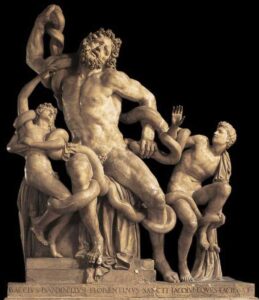 Millions of decent and hard-working people are presently coming to grips what has been happening to them, and so we’ll cover a crucial piece of the puzzle, but one that is very little known.
Millions of decent and hard-working people are presently coming to grips what has been happening to them, and so we’ll cover a crucial piece of the puzzle, but one that is very little known.
Regardless that the US Constitution opens with “We the people,” it wasn’t the people who created it, it was the states.
It was state representatives who produced the constitution and it was the states who ratified it. This was clearly understood at the time and for a long time after.
And, very importantly, the states retained their power under the constitution. I could throw a number of quotes at you to support this, but I’ll give you just one, leading into our main point. It comes from James Madison, the primary author of the constitution, in the Federalist Papers (#39, to be specific). This is Madison explaining the power of the states over the Senate in the new arrangements:
The Senate, on the other hand, will derive its powers from the States, as political and coequal societies…
Notice that Senate got its powers directly and only from the states.
Senators, under the original constitution, were appointed by state governments, not elected by the people. This was a crucial part of the arrangement. In fact, this was the original separation of powers. I’ll state that again, because it’s a completely novel thought to most Americans, and deeply important:
Giving the states control of the Senate was the original separation of powers. This was done carefully and thoughtfully, to prevent the consolodation of power in Washington, D.C.
Under this arrangement, the states kept the Senate, with its very broad powers, under their control.
Again I could throw out quotes on the importance of breaking up power to the framers of the US constitution, but I’ll leave that job to you. I will, however, summarize this point:
The purpose of the states having the power to appoint senators wasn’t to deprive the people of a voice, it was to protect the people by preventing the centralization of power.
This crucial arrangement held, more or less, until the ratification of the seventeenth amendment in 1913. And it’s important to note that the arguments in favor of that amendment played upon ignorance and gullibility.
The first argument was that there was corruption involved in appointing senators. It implied that corruption would simply cease once that changed, and that the players in Washington were as pure as the wind-driven snow. The second argument was that some states hadn’t always appointed senators promptly. It implied that this was a deathly horror. Nonetheless, people were seduced by the promise of more power in their own hands, and so the amendment was ratified.
In an enormous act of centralizing, the states were stripped of their power over Washington, D.C. But to whom was that power given?
Voters naively thought the power formerly held by the states would be handed to them, but it was the political class who snatched it up. They usurped control of the Senate, and in the process breached the separation of powers.
People could still vote, of course, but their choice was from then on limited to two carefully chosen alternatives… to carefully curated candidates. Candidates with independent streaks might slip through from time to time, but not nearly enough to threaten the power of the parties.
To buttress this last point, consider that between the constitution and the 17th Amendment, a period of 125 years, there had been, minimally, seven major parties in the United States. Over the 110+ years since, there have been only two major parties. Those two have reigned over Washington D.C. for well over a century, and continue to reign.
And, by the way, most of the framers of the constitution despised the idea of political parties. Moreover, the constitution makes no allowances for them.
This is one of the unspoken facts that lies at the center of US political power. It’s something Americans should be aware of.
**
